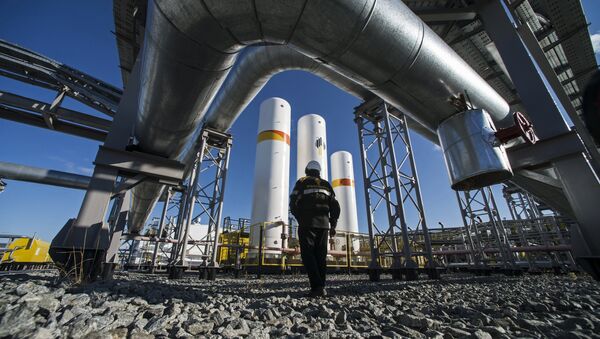Rosneft, Russia’s biggest oil company, has a scenario worked out for $30 a barrel, company spokesperson Mikhail Leontiev told RBK. According to him, even if oil drops to $30 the company will continue to develop its offshore projects. What is more, a source in Rosneft told RBK that Russian oil producers have no need to change their investment and operation plans if Brent keeps at $25 or higher.
Taking into account the fact that for major Russian oil companies production costs are relatively low, the further drop in oil prices would not prevent them from keeping or even expanding their shares in the market.
What is more, Russian oil producers are capable of withstanding the low prices, Bank of America analysts said. According to their November report, the majority of Russian oil companies can earn profits at $30 a barrel, while for Rosneft and Bashneft the threshold is $20 or lower.
Low oil prices hurt the federal budget more than oil producers. According to Russian Deputy Prime Minister Arkady Dvorkovich, the Russian fiscal system presumes that the budget, not oil companies, bears the risks of falling oil incomes.
According to analysts, none of Russia’s oil companies is likely to declare a default.
"The majority of the currently operational projects provides necessary cash flows, taking into account that taxes are lower with falling oil prices," Anton Rubtsov, Business Development Director at VYGON Consulting, was quoted as saying by RBK.
Since the beginning of 2016, global oil prices have tumbled by 15 percent and were close to $30 a barrel on Tuesday, a price seen impossible year-and-a-half ago.
In addition to the oil market glut which is expected to persist in 2016, technical factors like stock speculations and the strengthening dollar are playing against oil.
According to Morgan Stanley analysts, the downward trend in the oil market is now driven by the dollar rates and other technical factors. As a result, the outlook is that crude is likely to cheapen further, possibly to $20 a barrel.
In addition, 689 positions (689,000 barrels) were opened in $15 put options. So far, this is a negligible quantity but it is gradually rising.
In turn, the number of positions in $20 put options for Brent due to mature until December 2016 has risen by more than 700 percent since the beginning of the year, Reuters reported.
Another important factor is the record high number of speculative short positions on ICE and NYMEX. According to the CFTC and ICE, between the beginning of the year and January 5, traders increased the number of short positions by 15 million barrels, to 363 million. This is a signal that hedge funds expect oil prices to continue to fall.
The US dollar index has risen more than 20 percent since mid-2014 as a relatively robust US economy attracted investments from other regions, according to Reuters. In the last years, the dollar index increased by eight percent. The Federal Reserve’s increase of US interest rates in December and the prospects for yuan devaluation has also helped the greenback go up.
Recently, the rising dollar has become the main factor contributing to the oil prices fall, Morgan Stanley analysts pointed out. The drop from $100 to $60 a barrel was a result of the glut in the global market while the drop from $55 to $35 was provoked by the dollar factor.
Earlier this week, several banks including Barclays, Macquarie, Bank of America Merrill Lynch, Standard Chartered, and Societe General downgraded their outlooks for oil prices in 2016. Morgan Stanley reported that Brent is likely to drop to $20 a barrel while Standard Chartered predicted a drop to $10.
A price of $20 and even lower has become real, especially taking into account not the WTI and Brent benchmarks but low grades traded with a discount. For instance, Western Canada Select is currently $16.6 a barrel, according to Bloomberg, and Iran’s Basrah Heavy sold to Asia for $18.7 a barrel and for $20-21 to the US and Europe. On January 12, the OPEC oil basket comprising 13 crude grades was $27.07 per barrel.







